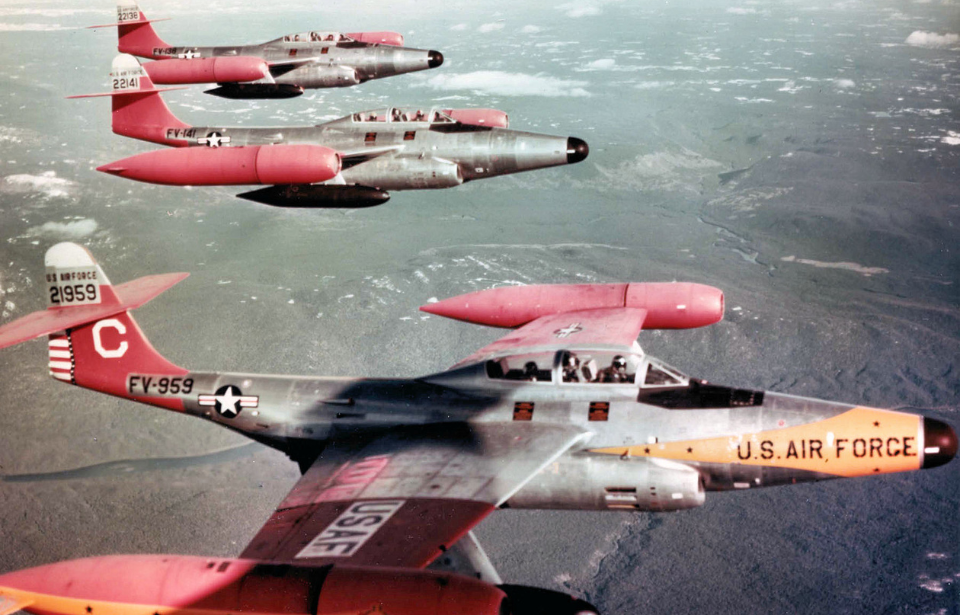During the Cold War, the US Air Force was in need of a new interceptor aircraft to combat Soviet bombers. The Northrop F-89 Scorpion was the answer, and a modified version became the first and only aircraft to fly and detonate a nuclear-tipped rocket. The power and danger of nuclear weapons became understood with time, meaning just one of the F-89J’s nuclear rockets was ever detonated.
Development of the Northrop F-89 Scorpion
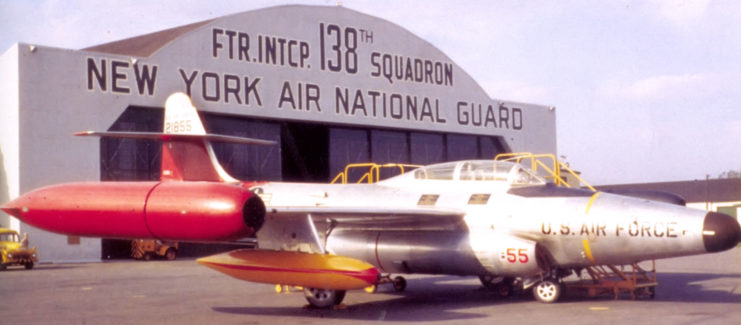
The Northrop F-89 Scorpion was designed as an all-weather, two-seater, jet-powered fighter-type interceptor aircraft. It was developed for use by the US Air Force as a night fighter, to replace the propellor-driven Northrop P-61 Black Widow and the North American P-82 Twin Mustang. The F-89 was commissioned in 1945, and the first prototype, the XP-89, flew in 1948. By September 1950, the aircraft was officially introduced as the Air Force’s newest dedicated interceptor.
The F-89 was fitted to house a radar operator in the rear seat to help the pilot locate, intercept and destroy enemy aircraft. The aircraft had a cruising speed of 465 MPH and a maximum speed of 627 MPH, with a range of 1,600 miles. With a wingspan of over 59 feet, the F-89 was an impressive interceptor that offered a lot of promise, and Northrop built 1,050.
Modifications to create the Northrop F-89J Scorpion
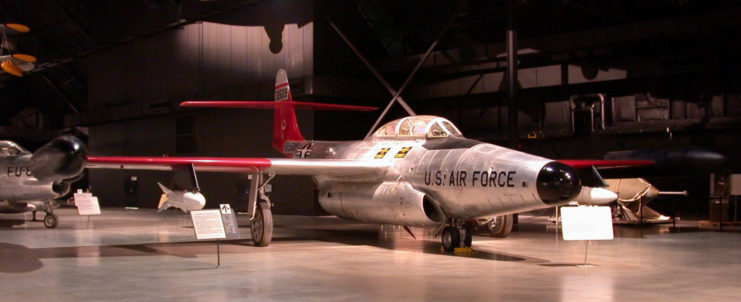
Multiple variations of the F-89 were developed during its years of production. Models -B through -D were built, while -E through -G were paper studies only. Aircraft production of the F-89H variant sported redesigned wingtip pods, but it was the F-89D that became the major production model, with 682 built.
The F-89D was further modified to become the F-89J, in what was called Project Ding Dong. The F-89J was intended and built to support the mounting of two MB-1 (later AIR-2) Genie nuclear-tipped air-to-air rockets under its wings, as well as four Falcon air-to-air missiles. A total of 350 were built, and it became the first operational combat-level aircraft to be outfitted with air-to-air nuclear weaponry.
Operation Plumbbob
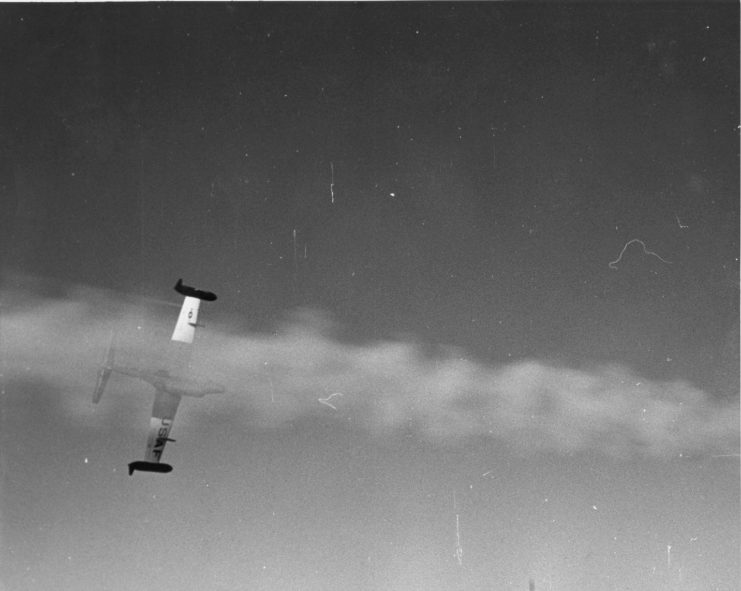
From May to October 1957, the US conducted a series of nuclear tests at the Nevada Test Site. Dubbed Operation Plumbbob, it featured 29 explosions (27 of which produced a nuclear yield) and contributed to the development of warheads for intermediate and intercontinental range missiles, as well as those used for anti-submarine and air defense purposes.
On July 19, 1957, an F-89J Scorpion was flown over Yucca Flat. Five Air Force officers and a civilian defense photographer watched as the aircraft flew overhead, equipped with two 820-pound MB-1 Genie rockets topped with W25 warheads. Following a countdown, pilot Capt. Eric W. Hutchison and radar intercept officer Capt. Alfred C. Barbee shot one of the rockets forward. After its release, the aircraft turned around and flew in the opposite direction.
After 12 seconds, the MB-1 Genie rocket had traveled six miles, and the fire control system onboard the F-89J transmitted a radio signal to detonate the warhead’s fuse. The rocket then erupted into a nuclear fireball. The strength of the explosion was estimated to be one-tenth of that of the nuclear bomb Little Boy, which was dropped over Hiroshima.
An MB-1 Genie rocket was never detonated again
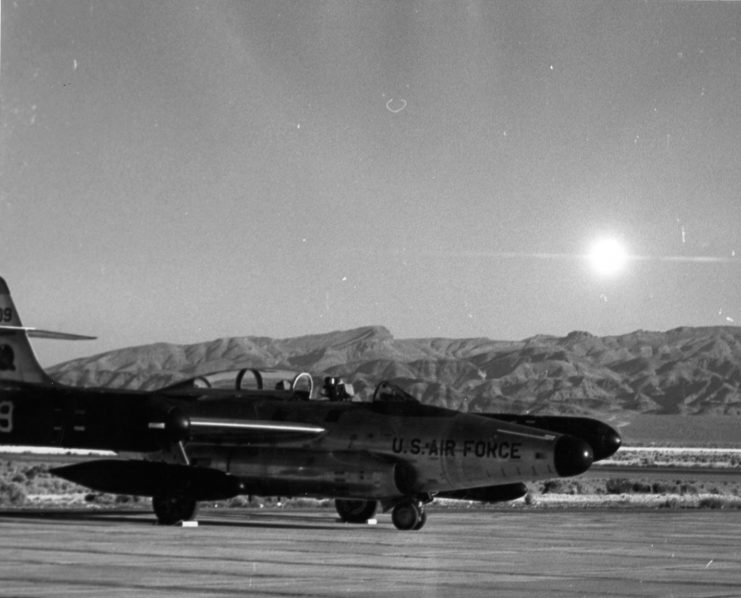
The nuclear bombings of Hiroshima and Nagasaki proved it only took one nuclear weapon to decimate an entire city. The destruction was unimaginable, and the after-effects of the nuclear radiation plagued survivors.
Despite the obvious magnitude of danger surrounding nuclear weapons, their use was not yet considered taboo; many military planners believed they’d be mounted and employed on all military vehicles. This gave way to the modified F-89J. However, precision targeting technologies were still being developed and the idea of shooting a nuclear rocket in the general direction of an enemy aircraft was too dangerous and messy.
An MB-1 Genie nuclear rocket was never detonated again following the test on July 19, 1957. All six of the observers at the testing site were later diagnosed with cancer – however, it isn’t clear if their illnesses were the direct result of their exposure to the detonation.
More from us: North American X-15: The Fastest Manned Rocket Aircraft Ever Developed
The F-89J served with the Air Defense Command, later renamed the Aerospace Defense Command (ADC), until 1959 and with the Air National Guard for another decade. Over time, support for the aircraft diminished, leading to its retirement in 1969.
